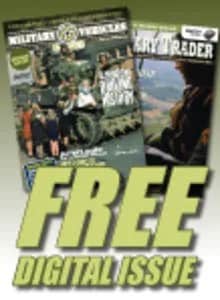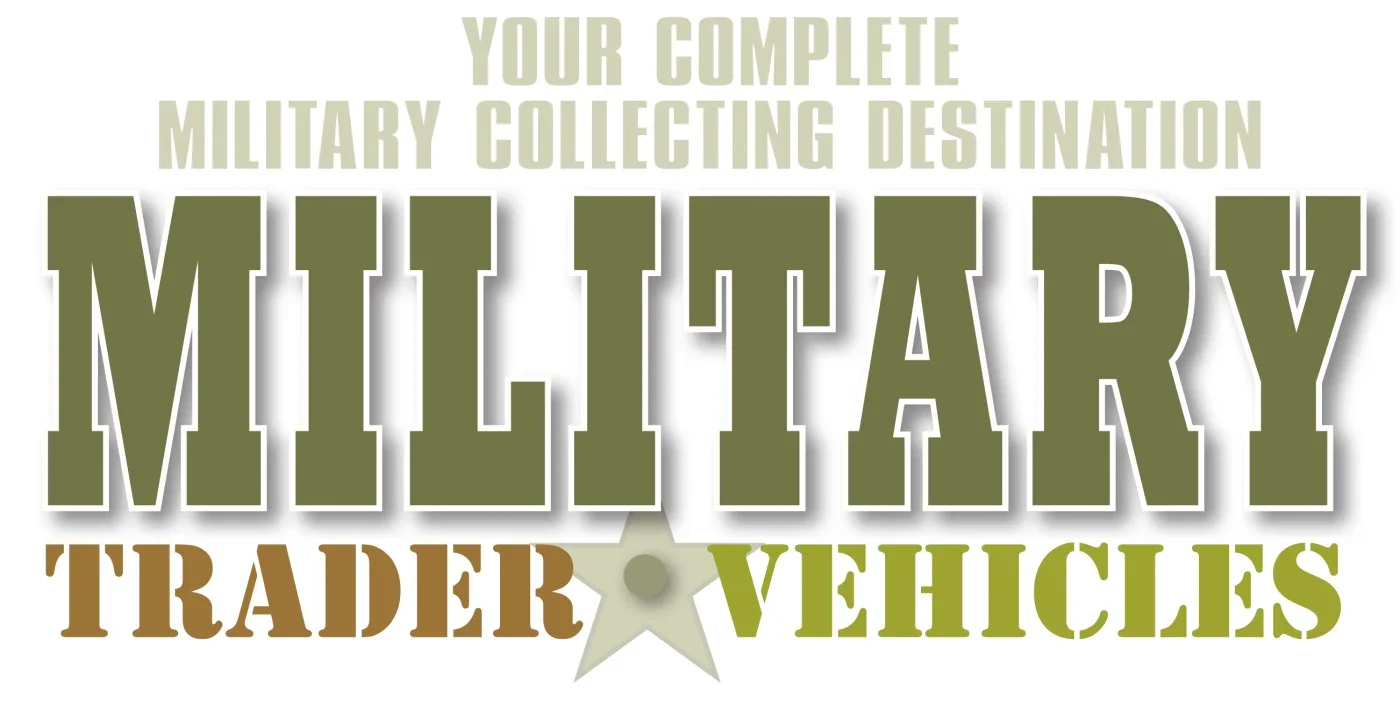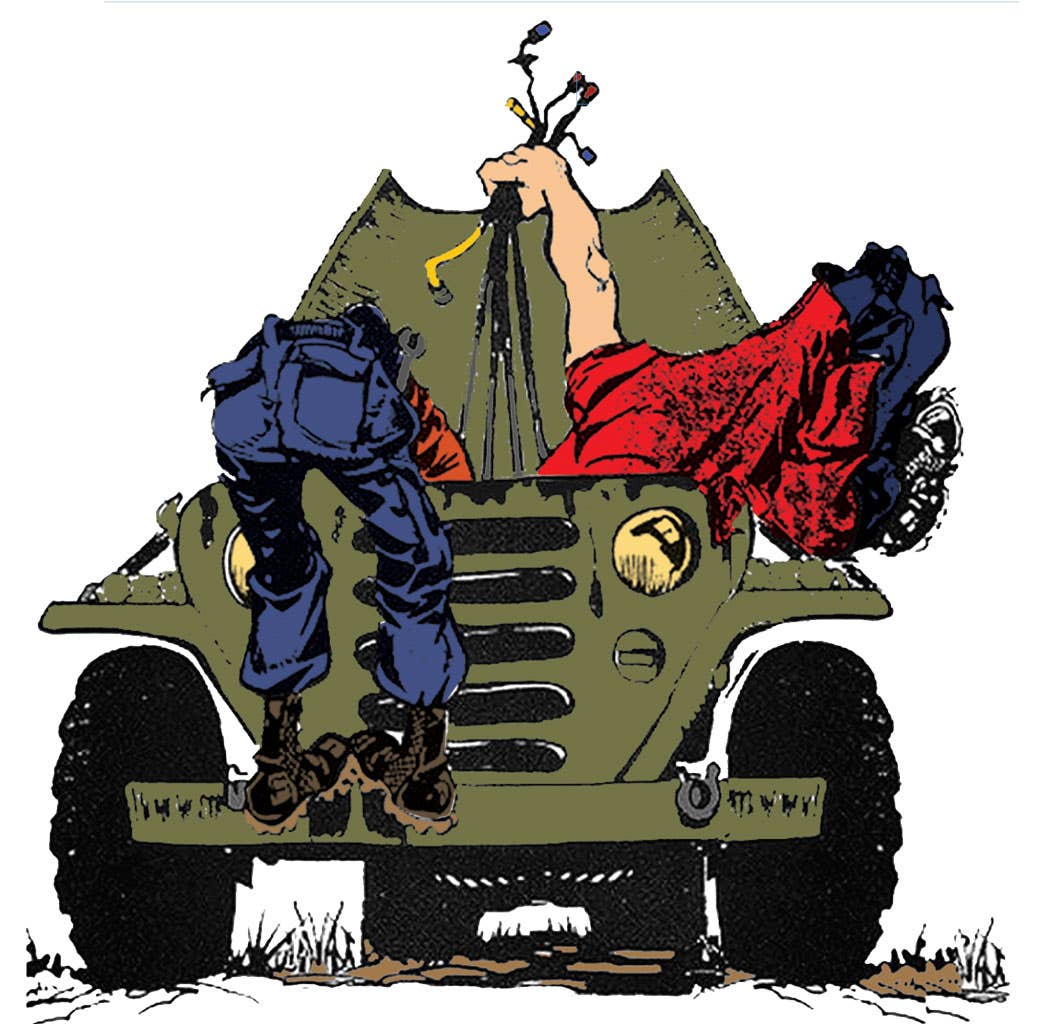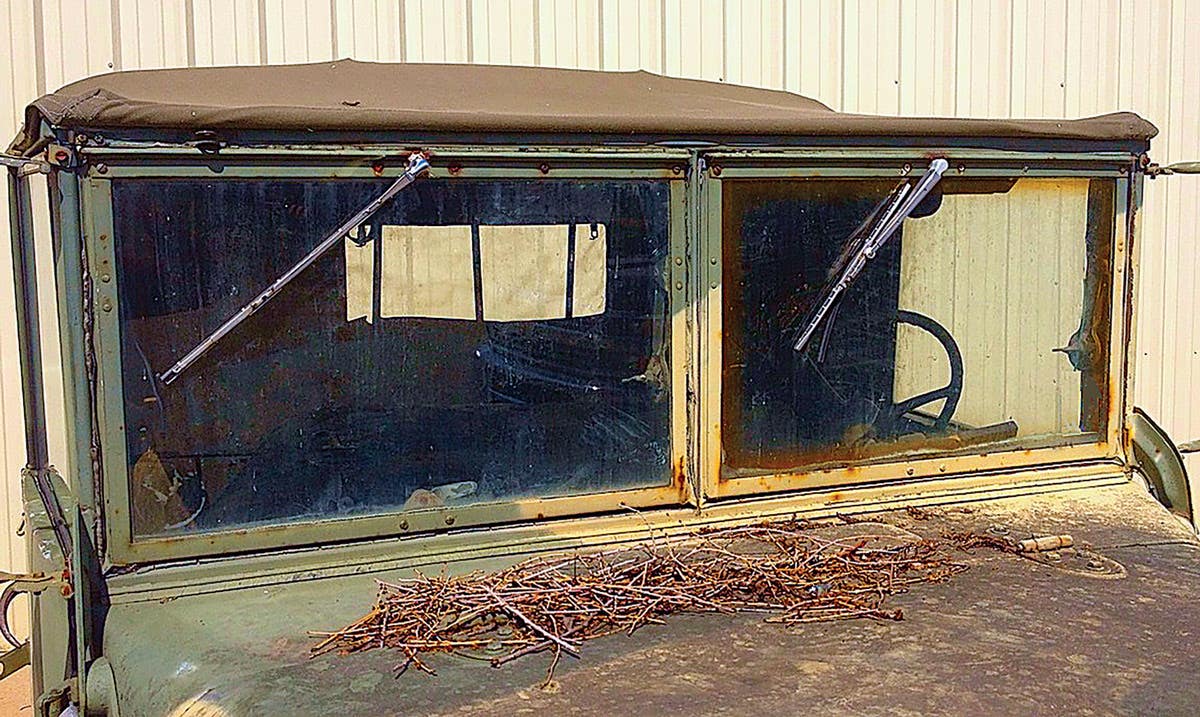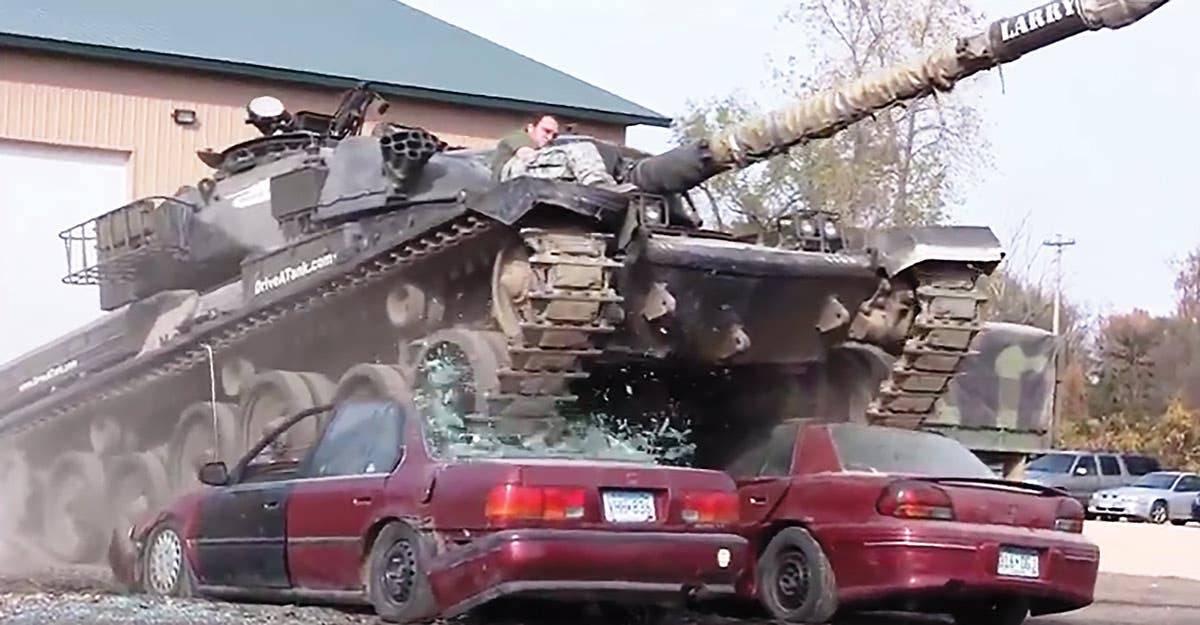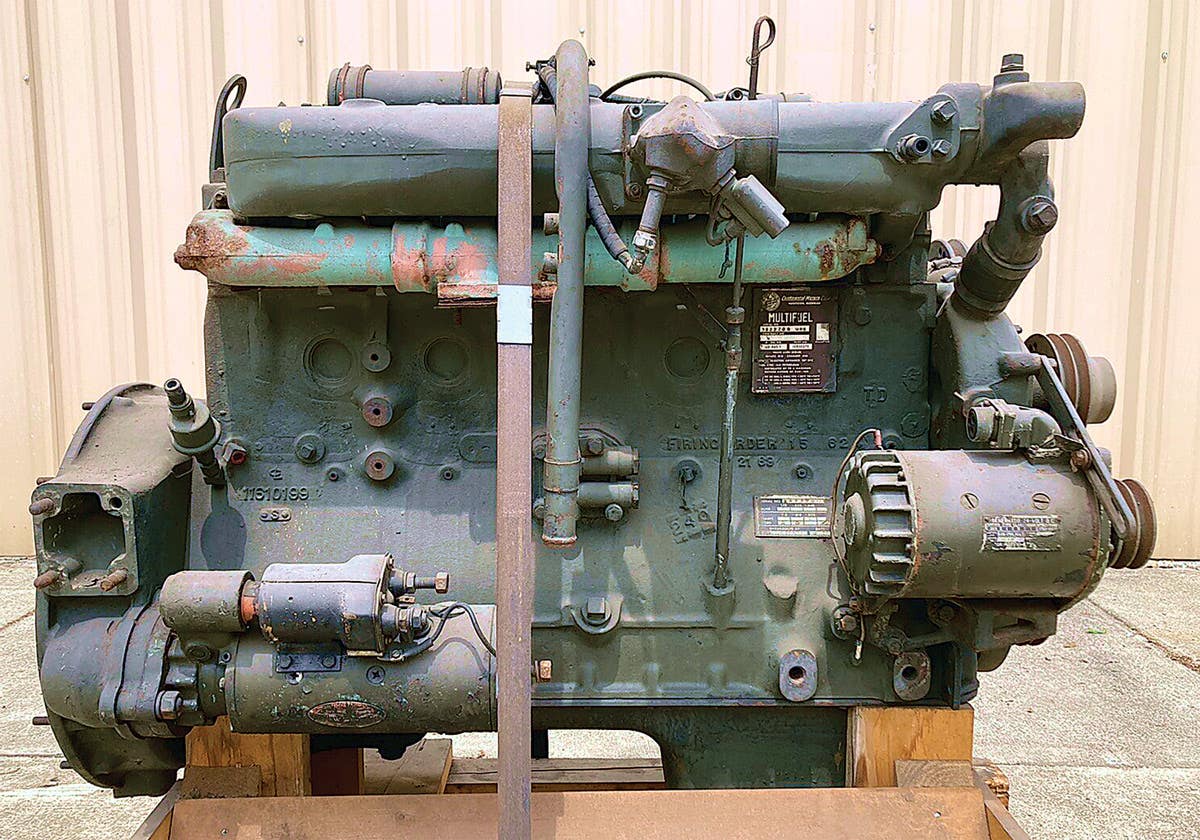Your Military Vehicle is Original Only Once
“Amazing original, not restored 1954 Dodge M37,” announced an ad in April issue of Military Vehicles Magazine. Having been a long time supporter of “unrestored” vehicles and an advocate of…
“Amazing original, not restored 1954 Dodge M37,” announced an ad in April issue of Military Vehicles Magazine. Having been a long time supporter of “unrestored” vehicles and an advocate of leaving some vehicles untouched, the ad stuck in my mind. As I worked through the day, in fact, my thoughts returned to the unrestored truck. When I went home at night, I continued to consider the unmolested, original condition truck. And as I stood in my morning “ideas chamber” (the shower), I continued to think about the history the truck represented.
It’s Only Original Once
I couldn’t get the image of the unrestored truck out of my mind. Then I visited the advertiser’s website. There, I found more photos and a detailed description that read, in part:
“This truck spent its military life assigned to the famous Wisconsin 32nd Infantry Division. The bumper markings identify this truck as assigned to the Wisconsin National Guard 127th Support Battalion. “A” Company vehicle # 19. The bumper markings are original – WI NG 127S A19. The original US Army registration numbers and national star emblems remain – faded but undisturbed. Serial Number 880259719, delivery date Jan -29-1954.
The current owner had this vehicle for 20 years. When it was released from the military service it was transferred through the Federal Surplus Property program to a small municipality village in central Wisconsin under the civil defense assistance plans of the 1960’s. The town never modified the vehicle.
The truck is so original that we have kept it in that original condition rather than doing a full restoration. Keeping in mind that “a vintage vehicle is only ORIGINAL once”. We have done the mechanical maintenance and have driven it regularly. The truck is straight and solid. It starts easily hot or cold. The service brakes were replaced, wheel bearings and seals checked and replaced as needed. New brake master cylinder installed. The truck stops as intended. The drive train components including the engine, transmission, transfer case and differentials have been drained and refilled on schedule. The transfer case and four wheel drive is operational. The electrical system retains the original military 24 volt generator and regulator system. The original charging system operates correctly. The service lights – headlights and taillights work. The vacuum type windshield wipers operate correctly.
The body and cargo bed are straight and solid. There is minor rust in the two locations where M37’s always rust. Rust is present under head light buckets on the front fenders and across the back under the tailgate. Repair kits are available for these areas. Yes there is some normal surface rust on the frame and in some component corners. It’s a 59 year old truck…A super solid, all-original, 60-year-old military artifact ready for preservation or restoration.
I was hooked. It has been many years since I had attempted to buy a military vehicle, but this was it. This truck appealed to my all of the elements that directed me to a career in museums and history. “Original condition” is a rarity in the HMV hobby and always commands the most attention at shows. Here was a chance to own an original, unrestored vehicle used by the famous “Red Arrow” Division of Wisconsin.
HISTORICAL MILITARY VEHICLE HOBBY IS DIFFERENT
Unlike other facets of military collecting, the military vehicle hobby condones—in fact, encourages—total restoration of artifacts. While most military relic collectors live by the conservation adage of “Leave it alone,” military vehicle collectors support, applaud and reward total “restoration.” I placed that word in quotes because there are very few established guidelines that actually define what constitutes a “restoration.” Hoping that this doesn’t sound too mean, let me say that “restoration” tends to mean, “fresh paint, straight medal and no dust or dirt.” The intention of most is to return a vehicle to the way it looked at some point between when it rolled off the production line and when it was delivered to a unit and had markings applied.
Like our neighbors in the old car community, restorations run a large gamut from over-the-top, nicer than the company ever made it all the way to “motorpool class” (the HMV equivalent of “rat rods”). But unlike the car world, the military vehicle hobby has been slow to realize that “unrestored” is much rarer than restored.
ORIGINAL OR RESTORE? MY PERSONAL CONFLICT
So, when I saw that ad in Military Vehicles Magazine, I thought it was time to act! I knew how rare it was to find “unrestored” that was actually drivable. I spoke to my partner about the truck, describing its historical significance and rarity as justification for the purchase I wanted to make. She is a life-long museum professional and listened with interest as I described the integrity of the truck’s traceable lineage. When I was done, she delivered a question that struck to the core of my conviction: “Will the grandkids be embarrassed to ride in it because it doesn’t look ‘nice’?”
Oh my gosh…Of course the truck is an amazing document, but as so many owners of military vehicles (or antique cars, vintage tractors, or vintage motorcycles) know, a good portion of satisfaction is derived from strangers commenting on how good their vehicles look. I imagined explaining, over and over, why the 60-year-old truck looked like a 60-year-old truck.
As I pictured the scenario, I became embarrassed. Even though I have preached—for years—“A vehicle is original only once,” I was coming to the conclusion I would have far more satisfaction from a freshly painted, nicely restored vehicle rather than becoming the guardian for a piece of history. As the conflict swirled in my brain, my passion for buying the truck sank.
A QUESTION FOR THE HOBBY
Whose responsibility is it to preserve the documents of history? If you buy an unrestored truck and decide to paint it lemon yellow with red tiger stripes, that should be your business. But, seriously, what responsibility does each of us have in preserving history, rather than restoring it to how we believe it once appeared?
The truth of the matter is, if we all assumed the role of preservationists, the automotive hobbies (HMVS, cars, motorcycles, scooters, tractors, etc) would have far fewer participants. In fact, preservation is only one small aspect of the hobby. Restoration is another aspect, as is modification, driving, racing and a host of other “non-purist” pursuits. The hobby is large enough to embrace all of these different interests.
WHAT ABOUT THE M37?
By the time I drove to the Show of Shows in Louisville, Kentucky, in late February, I still had made a commitment to the truck. I was still rolling it around in my brain, weighing the pros and cons. If I bought it, the historian in me would prevent me from committing a restoration. Rather, my personal views would burden me with becoming the “caretaker” of the original condition, working to slow down and further erosion of its integrity over time. On the other hand, if I bought it and wanted to drive it in a parade with the piglets (my partner’s grandkids), I would have to endure the embarrassing questions of why “JAG’s truck looked so run-down.” The conflict was far from over.
As most shows go, I reconnected with a lot of friends in Kentucky. One good buddy (he could almost be considered a brother I never knew I had) sat down at my table to talk. We covered a lot of territory—parents, shooting, buying and selling relics—when I began to describe the truck I was considering buying.
As I described the truck, I saw a bigger smile on his face than I expected as I unwound my tale of personal conflict. At a certain point, I could see he couldn’t contain himself any longer. “What?” I demanded. “What the heck are you grinning about?”
“That’s my truck, you dummy!” he said between laughs. “I thought you knew I had that truck,” he went on before describing, in detail, how he had obtained it twenty years ago and decided to preserve it. Well now the hook was firmly set in my jaw…all he had to do was reel me in.
We talked for quite awhile, when it was decided it was time for me to do more business at my table and for him to do some more show searching. We agreed to talk more about the truck.
About an hour later, he stopped at my table. He started, “You aren’t going to believe this…” I assumed he had found some rarity in the show that both he and I would covet. “My wife just called. She sold the truck.”
THE TIME TO BUY AN ANTIQUE…
I broke one of my cardinal collecting rules: Rather than recognizing the opportunity and making the purchase, I waited. I thought. I considered. I procrastinated. Ultimately, I missed the opportunity.
Though I initially shrugged it off, I kicked myself repeatedly as I made the 14-hour drive back to Minnesota. I really screwed up by over-thinking it. Or did I?
By the time I rolled into my cozy little garage (too cozy, in fact, to accommodate an M37), I had reassessed my military vehicle collecting priorities. If I wanted a truck to drive in parades, show off around town, or just feel good about, I would allow myself to restore it. So, the search continues…
Preserve the Memory, Enjoy the History,
John Adams-Graf
Editor, Military Vehicles Magazine and Military Trader
John Adams-Graf ("JAG" to most) is the editor of Military Trader and Military Vehicles Magazine. He has been a military collector for his entire life. The son of a WWII veteran, his writings carry many lessons from the Greatest Generation. JAG has authored several books, including multiple editions of Warman's WWII Collectibles, Civil War Collectibles, and the Standard Catalog of Civil War Firearms. He is a passionate shooter, wood-splitter, kayaker, and WWI AEF Tank Corps collector.
